Is tourism a cause of looting in Egypt? Tourism and looting in Egypt seem unrelated, but according to SIXT.VN, economic instability, exacerbated by tourism fluctuations, significantly contributes to this illicit activity. Our analysis provides a comprehensive look into how tourism downturns can indirectly fuel the looting of historical sites in Egypt, especially when coupled with other economic factors, and will help you understand the deep connection between heritage preservation and socioeconomic factors with travel solutions. With SIXT.VN, discover tailored travel options that support local communities and safeguard Egypt’s cultural treasures.
Table of Contents
- What Role Does Tourism Play in Egypt’s Economy?
- How Does Economic Instability Connect to Looting in Egypt?
- What Impact Did the 2011 Arab Spring Have on Looting and Tourism?
- Which Archaeological Sites in Egypt Are Most at Risk?
- How Does the Global Antiquities Market Influence Egyptian Looting?
- What Can Be Done to Protect Egypt’s Archaeological Heritage?
- What Role Do Local Communities Play in Protecting Archaeological Sites?
- How Can Technology Help in Monitoring and Preventing Looting?
- What Legal Measures Exist to Deter Looting in Egypt?
- How Does SIXT.VN Support Responsible Travel in Egypt?
- Frequently Asked Questions (FAQs)
1. What Role Does Tourism Play in Egypt’s Economy?
Tourism is vital to Egypt’s economy, but its fluctuations can exacerbate economic instability, indirectly leading to looting. Tourism brings revenue and jobs, but political instability and economic downturns can severely impact this sector.
Tourism in Egypt serves as a cornerstone of the national economy, significantly contributing to its gross domestic product (GDP) and providing employment opportunities for a substantial portion of the population. According to the Egyptian Ministry of Tourism and Antiquities, tourism directly and indirectly accounts for over 10% of Egypt’s GDP, making it one of the most critical sectors for economic growth. This sector employs millions of Egyptians, ranging from hotel staff and tour guides to artisans and transportation providers, thereby supporting numerous families and communities across the country.
The influx of foreign currency through tourism helps stabilize Egypt’s balance of payments and supports its ability to finance imports and manage external debt. The revenue generated from tourist activities, such as entrance fees to historical sites, accommodation, and local purchases, is crucial for funding government initiatives and public services. Moreover, a thriving tourism industry encourages investment in infrastructure, including the development of airports, roads, and communication networks, which further stimulates economic activity and improves the quality of life for residents.
However, the tourism sector in Egypt is notably vulnerable to external shocks, such as political instability, security threats, and global economic downturns. Events like the Arab Spring in 2011 and subsequent periods of political turmoil led to a sharp decline in tourist arrivals, resulting in significant economic losses. The COVID-19 pandemic in 2020 further highlighted this vulnerability, as travel restrictions and health concerns caused an unprecedented collapse in international tourism, severely impacting Egypt’s economy.
When tourism declines, the resulting loss of income can have cascading effects on other sectors, including retail, hospitality, and transportation. Small businesses that rely on tourist spending often struggle to survive, leading to job losses and increased economic hardship for local communities. This economic instability can create desperation among the population, driving some individuals to seek alternative sources of income, including illegal activities such as looting archaeological sites.
The relationship between tourism and economic stability in Egypt is therefore complex and multifaceted. While a robust tourism industry can drive economic growth and improve living standards, its susceptibility to external factors means that fluctuations in tourist arrivals can have significant adverse effects. To mitigate these risks, Egypt needs to diversify its economy, strengthen its security measures, and implement policies that support sustainable and resilient tourism. Diversification involves developing other economic sectors, such as manufacturing, agriculture, and technology, to reduce the country’s reliance on tourism. Strengthening security measures is essential to ensure the safety and confidence of tourists, while promoting sustainable tourism practices can help preserve Egypt’s cultural heritage and natural resources for future generations.
SIXT.VN understands the intricate dynamics between tourism and economic stability in Egypt. By providing reliable and convenient travel solutions, SIXT.VN supports the tourism sector and contributes to the economic well-being of local communities. SIXT.VN offers a range of services, including airport transfers, hotel bookings, and guided tours, designed to enhance the travel experience and encourage more visitors to explore Egypt’s rich cultural heritage. Through responsible and sustainable tourism practices, SIXT.VN aims to play a role in preserving Egypt’s archaeological treasures and supporting the long-term prosperity of its people.
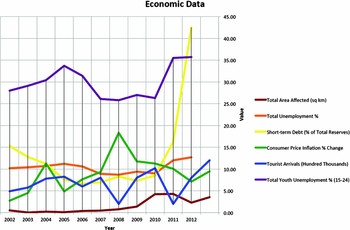 Economic Impact of Tourism
Economic Impact of Tourism
Image alt text: Graph showing the correlation between economic indicators like youth unemployment and tourism decline with site damage in Egypt.
2. How Does Economic Instability Connect to Looting in Egypt?
Economic instability often leads to increased looting as people seek alternative income sources during hardship.
When a country’s economy falters, the impact is felt most acutely by its citizens. Job losses, reduced wages, and rising living costs can create a sense of desperation, pushing individuals to seek any means necessary to provide for themselves and their families. In Egypt, this economic strain has been directly linked to an increase in the looting of archaeological sites. The correlation is not merely coincidental; it is a consequence of the challenging economic realities faced by many Egyptians.
One of the primary drivers of looting during times of economic hardship is unemployment. When individuals lose their jobs, they often struggle to find alternative sources of income, especially in regions where employment opportunities are scarce. According to data from the World Bank, youth unemployment in Egypt has been a persistent issue, particularly in the years following the 2008 global financial crisis and the 2011 Arab Spring. The desperation that accompanies prolonged unemployment can lead individuals to engage in illegal activities, including the looting of historical sites, as a means of generating income.
The global antiquities market further exacerbates this issue. The demand for ancient artifacts is high, with wealthy collectors and museums willing to pay substantial sums for authentic pieces of Egyptian history. This demand creates a lucrative market for looted items, providing a financial incentive for individuals to risk engaging in illegal excavation and theft. The looters, often driven by poverty and lack of opportunity, may see the potential to unearth valuable artifacts as a quick and easy way to alleviate their economic struggles.
Moreover, economic instability can weaken law enforcement and security measures, making it easier for looters to operate without fear of reprisal. During times of economic crisis, government resources may be stretched thin, leading to reduced funding for the protection of archaeological sites. This lack of security can embolden looters, who may feel that the risk of being caught is minimal.
The looting of archaeological sites has devastating consequences for Egypt’s cultural heritage. When artifacts are stolen, they are often removed from their original context, making it difficult for archaeologists to study and understand them. This loss of contextual information can diminish the historical and scientific value of the artifacts, depriving future generations of the opportunity to learn about Egypt’s rich past. Furthermore, the act of looting itself can cause irreparable damage to archaeological sites, destroying structures, and disturbing layers of soil and sediment that contain valuable historical information.
To address the issue of looting, it is essential to tackle the underlying economic factors that contribute to it. Creating employment opportunities, particularly in regions where archaeological sites are located, can provide individuals with alternative sources of income and reduce the incentive to engage in illegal activities. Investing in education and vocational training can equip individuals with the skills they need to find stable employment and improve their economic prospects.
Strengthening law enforcement and security measures is also crucial. Increased funding for the protection of archaeological sites can help deter looters and ensure that those who are caught are brought to justice. This includes hiring more security personnel, installing surveillance systems, and implementing stricter penalties for looting offenses.
Promoting responsible tourism can also play a role in combating looting. By encouraging tourists to visit archaeological sites and support local businesses, Egypt can generate revenue that can be used to fund conservation efforts and create employment opportunities for local communities. It is important to ensure that tourism is sustainable and does not contribute to the degradation of archaeological sites.
SIXT.VN recognizes the connection between economic stability and the preservation of Egypt’s cultural heritage. By offering convenient and reliable transportation services, SIXT.VN facilitates tourism and supports the economic well-being of local communities. SIXT.VN encourages responsible tourism practices and works with local partners to promote the sustainable development of the tourism sector. Through its commitment to economic empowerment and cultural preservation, SIXT.VN strives to contribute to the long-term prosperity and heritage of Egypt.
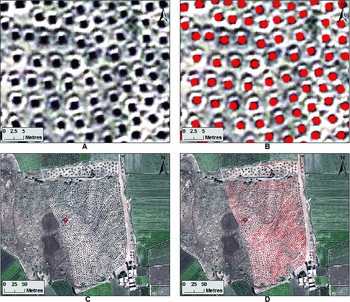 Looting Damage
Looting Damage
Image alt text: Close-up view of looting pits showing the scale and method of excavation.
3. What Impact Did the 2011 Arab Spring Have on Looting and Tourism?
The Arab Spring in 2011 led to political instability and security vacuums, causing tourism to plummet and looting to surge significantly.
The Arab Spring, which began in late 2010 and swept across the Middle East and North Africa in 2011, had a profound impact on Egypt, leading to significant political, economic, and social changes. One of the most visible consequences of the Arab Spring in Egypt was the dramatic increase in the looting of archaeological sites and a corresponding decline in tourism. The two phenomena were closely linked, with the political instability and security vacuums created by the revolution providing both the motive and the opportunity for increased looting activity.
Prior to the Arab Spring, Egypt’s tourism industry was a major source of revenue and employment, attracting millions of visitors each year to its ancient monuments and cultural sites. However, the political upheaval and social unrest that accompanied the revolution led to a sharp decline in tourist arrivals, as many potential visitors were deterred by concerns about safety and security. According to the Central Bank of Egypt, tourism revenues plummeted by as much as 90% in the immediate aftermath of the revolution, severely impacting the country’s economy and the livelihoods of those who depended on the tourism sector.
The decline in tourism had a ripple effect throughout the economy, leading to job losses, reduced wages, and increased economic hardship for many Egyptians. This economic desperation, combined with the breakdown of law and order, created a fertile ground for looting and other illegal activities. With fewer tourists to deter them and reduced security presence at archaeological sites, looters seized the opportunity to plunder Egypt’s cultural heritage.
Reports of looting began to surface in the early days of the revolution, with eyewitnesses describing organized gangs of looters descending upon archaeological sites and systematically excavating them in search of valuable artifacts. Sites that had previously been protected by guards and security personnel were left vulnerable, as the police and military were preoccupied with maintaining order in the major cities.
The looting was not limited to remote or obscure sites; even well-known and heavily visited sites such as Giza, Saqqara, and Luxor were targeted by looters. The artifacts stolen ranged from small objects such as coins and jewelry to larger items such as statues and sarcophagi. Many of these items were smuggled out of the country and sold on the international antiquities market, fueling a lucrative trade in stolen cultural property.
The impact of the looting on Egypt’s archaeological heritage was devastating. When artifacts are removed from their original context, they lose much of their historical and scientific value. The act of looting itself can also cause irreparable damage to archaeological sites, destroying structures and disturbing layers of soil and sediment that contain valuable historical information.
The Egyptian government has taken steps to address the issue of looting and protect its archaeological heritage. However, the task is challenging, given the scale of the problem and the limited resources available. The Ministry of Antiquities has increased security at major sites, implemented stricter regulations on the export of antiquities, and launched public awareness campaigns to educate people about the importance of preserving Egypt’s cultural heritage.
International organizations such as UNESCO and INTERPOL have also provided assistance to Egypt in its efforts to combat looting and recover stolen artifacts. These organizations have helped to train Egyptian law enforcement personnel, provide technical expertise in the identification and authentication of artifacts, and facilitate the repatriation of stolen cultural property.
SIXT.VN recognizes the importance of protecting Egypt’s archaeological heritage and supports efforts to combat looting and promote responsible tourism. By offering reliable and convenient transportation services, SIXT.VN facilitates tourism to Egypt and helps to generate revenue that can be used to fund conservation efforts and create employment opportunities for local communities. SIXT.VN also encourages its customers to respect local laws and customs and to avoid purchasing any items that may have been illegally obtained.
Through its commitment to responsible tourism and cultural preservation, SIXT.VN strives to contribute to the long-term sustainability of Egypt’s tourism sector and the protection of its rich cultural heritage.
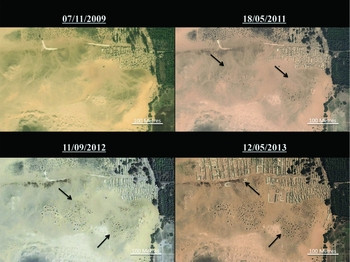 Looting Progression
Looting Progression
Image alt text: Satellite images showing the progression of looting at Dashur site over several years.
4. Which Archaeological Sites in Egypt Are Most at Risk?
Sites in the Nile Delta are particularly vulnerable to looting due to their accessibility and high density of archaeological remains.
Egypt is home to a vast array of archaeological sites, spanning thousands of years of history and representing a diverse range of cultures and civilizations. However, not all of these sites are equally at risk of looting. Some sites are more vulnerable due to their location, accessibility, the nature of the artifacts they contain, and the level of security they receive.
One of the regions in Egypt that is most at risk of looting is the Nile Delta. This fertile and densely populated area has been inhabited for millennia, and it is home to numerous archaeological sites, ranging from ancient cities and temples to cemeteries and settlements. The Nile Delta’s proximity to urban centers, its network of canals and waterways, and its relatively flat terrain make it easily accessible to looters.
The Nile Delta also contains a high density of archaeological remains, many of which are located close to the surface. This makes it easier for looters to find and extract valuable artifacts without having to undertake extensive excavation. The artifacts found in the Nile Delta are often highly portable, such as coins, jewelry, and small statues, making them easier to smuggle out of the country.
In contrast, sites located in remote desert regions or mountainous areas are generally less vulnerable to looting due to their inaccessibility. These sites are often more difficult to reach, requiring specialized equipment and knowledge of the terrain. The artifacts found in these regions may also be less portable or less valuable on the antiquities market, reducing the incentive for looting.
Another factor that influences the risk of looting is the level of security a site receives. Sites that are well-guarded and patrolled by security personnel are less likely to be targeted by looters. However, many archaeological sites in Egypt are understaffed and underfunded, making them vulnerable to looting.
Sites that are located near urban centers or densely populated areas are also at greater risk of looting. These sites are often targeted by local residents who are looking for quick and easy ways to make money. The looters may be motivated by poverty, unemployment, or simply the desire to acquire valuable artifacts for their own collection.
Some of the specific archaeological sites in Egypt that are considered to be at high risk of looting include:
- Tell Basta: Located in the eastern Nile Delta, Tell Basta was an important religious center in ancient Egypt, dedicated to the goddess Bastet. The site has been heavily looted in recent years, with looters targeting its temples, tombs, and cemeteries.
- Tanis: Located in the northeastern Nile Delta, Tanis was the capital of Egypt during the 21st and 22nd dynasties. The site has been extensively looted, with looters targeting its royal tombs and temples.
- Saqqara: Located south of Cairo, Saqqara is home to a vast necropolis that includes the Step Pyramid of Djoser, one of the oldest stone structures in the world. The site has been targeted by looters for centuries, with looters seeking to steal artifacts from its tombs and temples.
- Lisht: Located south of Cairo, Lisht was the capital of Egypt during the 12th dynasty. The site has been heavily looted, with looters targeting its pyramids, tombs, and temples.
The Egyptian government is working to protect these and other vulnerable archaeological sites from looting. However, the task is challenging, given the scale of the problem and the limited resources available. The Ministry of Antiquities has increased security at major sites, implemented stricter regulations on the export of antiquities, and launched public awareness campaigns to educate people about the importance of preserving Egypt’s cultural heritage.
SIXT.VN recognizes the importance of protecting Egypt’s archaeological heritage and supports efforts to combat looting and promote responsible tourism. By offering reliable and convenient transportation services, SIXT.VN facilitates tourism to Egypt and helps to generate revenue that can be used to fund conservation efforts and create employment opportunities for local communities. SIXT.VN also encourages its customers to respect local laws and customs and to avoid purchasing any items that may have been illegally obtained.
Through its commitment to responsible tourism and cultural preservation, SIXT.VN strives to contribute to the long-term sustainability of Egypt’s tourism sector and the protection of its rich cultural heritage.
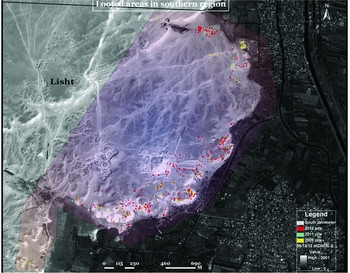 Lisht Looting
Lisht Looting
Image alt text: Satellite image showing red polygons marking looting pits at the Lisht site.
5. How Does the Global Antiquities Market Influence Egyptian Looting?
The global antiquities market fuels looting in Egypt by creating a demand for illegally obtained artifacts, driving local populations to plunder sites for profit.
The global antiquities market plays a significant role in influencing the looting of archaeological sites in Egypt. The market, which consists of collectors, dealers, and museums around the world, creates a demand for ancient artifacts, which in turn incentivizes looting activities. The high prices that some artifacts can fetch on the market make looting a lucrative activity for individuals and organized criminal groups.
The demand for Egyptian antiquities is particularly strong due to the country’s rich history and the cultural significance of its artifacts. Collectors and museums are willing to pay substantial sums for authentic pieces of Egyptian history, ranging from small objects such as coins and jewelry to larger items such as statues and sarcophagi. This demand creates a powerful incentive for looting activities.
The global antiquities market operates through a complex network of dealers, auction houses, and online platforms. Many of the artifacts that are sold on the market have been illegally obtained, either through looting or theft. The lack of transparency and regulation in the market makes it difficult to trace the provenance of artifacts and to identify those that have been illegally obtained.
The looting of archaeological sites in Egypt is often carried out by local residents who are motivated by poverty, unemployment, or simply the desire to acquire valuable artifacts for their own collection. These individuals may be unaware of the historical and cultural significance of the artifacts they are looting, or they may simply be willing to ignore the ethical implications of their actions in order to make money.
Organized criminal groups are also involved in the looting of archaeological sites in Egypt. These groups often operate on a larger scale, using heavy equipment to excavate sites and employing sophisticated methods to smuggle artifacts out of the country. The artifacts are then sold on the international antiquities market, with the profits being used to finance other criminal activities.
The global antiquities market has a devastating impact on Egypt’s archaeological heritage. When artifacts are removed from their original context, they lose much of their historical and scientific value. The act of looting itself can also cause irreparable damage to archaeological sites, destroying structures and disturbing layers of soil and sediment that contain valuable historical information.
The Egyptian government is working to combat the looting of archaeological sites and to regulate the global antiquities market. The Ministry of Antiquities has increased security at major sites, implemented stricter regulations on the export of antiquities, and launched public awareness campaigns to educate people about the importance of preserving Egypt’s cultural heritage.
International organizations such as UNESCO and INTERPOL are also working to combat the illegal trade in antiquities. These organizations have helped to train Egyptian law enforcement personnel, provide technical expertise in the identification and authentication of artifacts, and facilitate the repatriation of stolen cultural property.
However, much more needs to be done to address the problem of looting and to regulate the global antiquities market. This includes:
- Strengthening law enforcement and security measures at archaeological sites.
- Implementing stricter regulations on the export and import of antiquities.
- Improving the transparency and traceability of artifacts on the market.
- Raising public awareness about the ethical implications of purchasing looted artifacts.
- Working with international organizations to combat the illegal trade in antiquities.
SIXT.VN recognizes the importance of protecting Egypt’s archaeological heritage and supports efforts to combat looting and promote responsible tourism. By offering reliable and convenient transportation services, SIXT.VN facilitates tourism to Egypt and helps to generate revenue that can be used to fund conservation efforts and create employment opportunities for local communities. SIXT.VN also encourages its customers to respect local laws and customs and to avoid purchasing any items that may have been illegally obtained.
Through its commitment to responsible tourism and cultural preservation, SIXT.VN strives to contribute to the long-term sustainability of Egypt’s tourism sector and the protection of its rich cultural heritage.
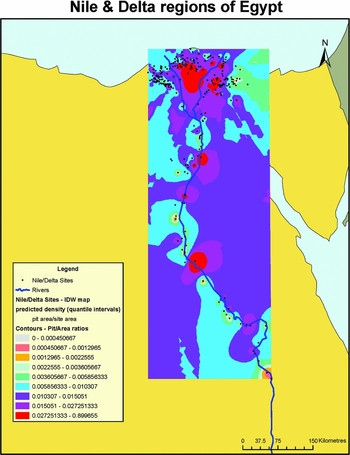 Density Map Looting
Density Map Looting
Image alt text: A heat map showing the density of looted areas, highlighting worst-affected regions.
6. What Can Be Done to Protect Egypt’s Archaeological Heritage?
Protecting Egypt’s archaeological heritage requires a multi-faceted approach including enhanced security, community involvement, and international cooperation.
Protecting Egypt’s archaeological heritage is a complex and multifaceted challenge that requires a coordinated effort from the government, local communities, international organizations, and individuals. The looting of archaeological sites, the illegal trade in antiquities, and the destruction of cultural heritage are all serious threats that must be addressed in order to preserve Egypt’s rich history for future generations.
Some of the key strategies that can be used to protect Egypt’s archaeological heritage include:
- Strengthening law enforcement and security measures: This includes increasing the number of security personnel at archaeological sites, providing them with better training and equipment, and implementing stricter penalties for looting and other offenses against cultural heritage.
- Engaging local communities: Local communities can play a vital role in protecting archaeological sites by reporting suspicious activity, assisting with conservation efforts, and promoting responsible tourism. It is important to involve local communities in the management and preservation of cultural heritage, and to ensure that they benefit from tourism and other economic activities related to archaeology.
- Promoting responsible tourism: Tourism can be a powerful force for economic development and cultural exchange, but it can also have negative impacts on archaeological sites if it is not managed responsibly. It is important to promote sustainable tourism practices that minimize the environmental and cultural impacts of tourism and maximize the benefits for local communities.
- Regulating the antiquities market: The illegal trade in antiquities is a major driver of looting and other crimes against cultural heritage. It is important to implement stricter regulations on the export and import of antiquities, to improve the transparency and traceability of artifacts on the market, and to raise public awareness about the ethical implications of purchasing looted artifacts.
- Raising public awareness: Public awareness campaigns can help to educate people about the importance of protecting Egypt’s archaeological heritage and to encourage them to take action to preserve it. These campaigns can target a variety of audiences, including local communities, tourists, collectors, and government officials.
- Using technology: Technology can be a powerful tool for protecting archaeological sites. Satellite imagery, drones, and other remote sensing technologies can be used to monitor sites for looting and other threats. Geographic information systems (GIS) can be used to map and manage archaeological sites, and databases can be used to track artifacts and prevent the illegal trade in antiquities.
- International cooperation: Protecting Egypt’s archaeological heritage is a global responsibility. International cooperation is essential for combating the illegal trade in antiquities, recovering stolen artifacts, and providing technical and financial assistance to Egypt for its conservation efforts.
The Egyptian government is committed to protecting its archaeological heritage and has taken a number of steps to address the threats it faces. The Ministry of Antiquities has increased security at major sites, implemented stricter regulations on the export of antiquities, and launched public awareness campaigns to educate people about the importance of preserving Egypt’s cultural heritage.
International organizations such as UNESCO and INTERPOL are also providing assistance to Egypt in its efforts to protect its archaeological heritage. These organizations have helped to train Egyptian law enforcement personnel, provide technical expertise in the identification and authentication of artifacts, and facilitate the repatriation of stolen cultural property.
SIXT.VN recognizes the importance of protecting Egypt’s archaeological heritage and supports efforts to combat looting and promote responsible tourism. By offering reliable and convenient transportation services, SIXT.VN facilitates tourism to Egypt and helps to generate revenue that can be used to fund conservation efforts and create employment opportunities for local communities. SIXT.VN also encourages its customers to respect local laws and customs and to avoid purchasing any items that may have been illegally obtained.
Through its commitment to responsible tourism and cultural preservation, SIXT.VN strives to contribute to the long-term sustainability of Egypt’s tourism sector and the protection of its rich cultural heritage.
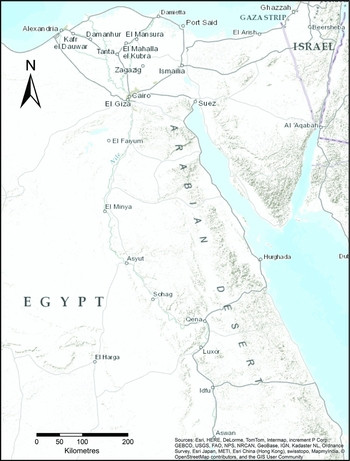 Egypt Map
Egypt Map
Image alt text: Map of Egypt, highlighting major archaeological sites and looting corridors.
7. What Role Do Local Communities Play in Protecting Archaeological Sites?
Local communities are vital in safeguarding archaeological sites through stewardship, reporting illegal activities, and promoting sustainable tourism.
Local communities play a crucial role in protecting archaeological sites. These communities often live near or even within archaeological zones, making them the first line of defense against looting and destruction. Their involvement is essential for the long-term preservation of cultural heritage.
One of the most important roles that local communities can play is that of stewards of the land. By developing a sense of ownership and responsibility for the archaeological sites in their area, they can help to ensure that these sites are protected and preserved for future generations. This can involve participating in conservation efforts, reporting suspicious activity, and educating others about the importance of cultural heritage.
Local communities can also play a vital role in promoting responsible tourism. By developing and managing tourism initiatives that are sustainable and culturally sensitive, they can help to ensure that tourism benefits the local economy without damaging archaeological sites. This can involve offering guided tours of archaeological sites, providing accommodation and other services to tourists, and selling locally made crafts and souvenirs.
In addition to their role in protecting archaeological sites, local communities can also benefit from archaeology in a number of ways. Archaeology can create jobs, generate income, and provide opportunities for education and training. It can also help to promote cultural identity and pride, and to foster a sense of community cohesion.
However, in order for local communities to play an effective role in protecting archaeological sites, they need to be empowered and supported. This means providing them with the resources and training they need to participate in conservation efforts, promoting responsible tourism, and ensuring that they benefit from archaeology. It also means involving them in the decision-making process regarding the management and preservation of cultural heritage.
The Egyptian government recognizes the importance of involving local communities in the protection of archaeological sites. The Ministry of Antiquities has launched a number of initiatives aimed at empowering local communities and promoting responsible tourism. These initiatives include:
- Providing training to local residents in conservation techniques and tourism management.
- Supporting the development of community-based tourism initiatives.
- Providing grants to local organizations for conservation and tourism projects.
- Involving local communities in the management and preservation of archaeological sites.
International organizations such as UNESCO and the World Bank are also supporting efforts to involve local communities in the protection of archaeological sites in Egypt. These organizations are providing technical and financial assistance to the Egyptian government and to local communities, and are working to promote responsible tourism and sustainable development.
SIXT.VN recognizes the importance of involving local communities in the protection of archaeological sites and supports efforts to empower them and promote responsible tourism. By offering reliable and convenient transportation services, SIXT.VN facilitates tourism to Egypt and helps to generate revenue that can be used to fund conservation efforts and create employment opportunities for local communities. SIXT.VN also encourages its customers to respect local laws and customs and to avoid purchasing any items that may have been illegally obtained.
Through its commitment to responsible tourism and cultural preservation, SIXT.VN strives to contribute to the long-term sustainability of Egypt’s tourism sector and the protection of its rich cultural heritage.
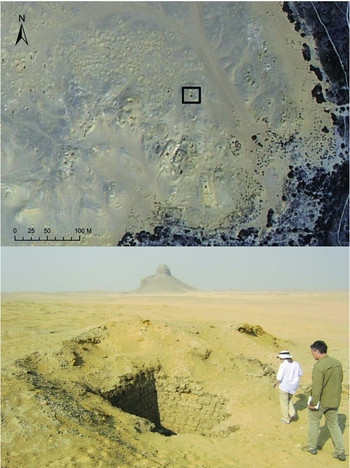 Dashur Looting Pit
Dashur Looting Pit
Image alt text: Image comparing a satellite view with a ground-level view of a looted pit at South Dashur.
8. How Can Technology Help in Monitoring and Preventing Looting?
Technology offers innovative solutions like satellite monitoring and drones for detecting and preventing looting, enhancing site security.
Technology plays an increasingly important role in monitoring and preventing the looting of archaeological sites. From satellite imagery to drones and sensor networks, technological innovations offer powerful tools for detecting looting activity, assessing damage, and enhancing site security.
One of the most effective technologies for monitoring archaeological sites is satellite imagery. High-resolution satellite images can be used to detect changes in the landscape, such as the appearance of new looting pits or the construction of illegal buildings. These images can be analyzed by experts to identify potential looting activity and to assess the extent of damage to archaeological sites.
Drones are another valuable tool for monitoring archaeological sites. Drones can be equipped with cameras and other sensors to capture high-resolution images and videos of sites. They can be used to survey large areas quickly and efficiently, and to monitor sites that are difficult to access on foot. Drones can also be used to detect looting activity in real-time, and to alert security personnel to potential threats.
Sensor networks are another promising technology for protecting archaeological sites. These networks consist of a series of sensors that are deployed around a site to detect movement, sound, and other indicators of looting activity. The sensors can be linked to a central monitoring station, where security personnel can monitor the site and respond to any alerts.
In addition to these technologies, there are a number of other technological innovations that can be used to protect archaeological sites. These include:
- Geographic information systems (GIS): GIS can be used to map and manage archaeological sites, and to track artifacts and prevent the illegal trade in antiquities.
- Databases: Databases can be used to store information about artifacts, sites, and looters, and to facilitate the recovery of stolen artifacts.
- Mobile apps: Mobile apps can be used to report looting activity, to access information about archaeological sites, and to promote responsible tourism.
The Egyptian government is increasingly using technology to protect its archaeological heritage. The Ministry of Antiquities has launched a number of initiatives aimed at leveraging technology to monitor sites, prevent looting, and promote responsible tourism. These initiatives include:
- Using satellite imagery to monitor archaeological sites for looting activity.
- Deploying drones to survey large areas and detect looting in real-time.
- Installing sensor networks at vulnerable sites to detect movement and other indicators of looting activity.
- Developing mobile apps to report looting activity and access information about archaeological sites.
International organizations such as UNESCO and the World Bank are also supporting efforts to use technology to protect archaeological sites in Egypt. These organizations are providing technical and financial assistance to the Egyptian government and to local communities, and are working to promote responsible tourism and sustainable development.
SIXT.VN recognizes the importance of using technology to protect Egypt’s archaeological heritage and supports efforts to leverage technology to monitor sites, prevent looting, and promote responsible tourism. By offering reliable and convenient transportation services, SIXT.VN facilitates tourism to Egypt and helps to generate revenue that can be used to fund conservation efforts and create employment opportunities for local communities. SIXT.VN also encourages its customers to respect local laws and customs and to avoid purchasing any items that may have been illegally obtained.
Through its commitment to responsible tourism and cultural preservation, SIXT.VN strives to contribute to the long-term sustainability of Egypt’s tourism sector and the protection of its rich cultural heritage.
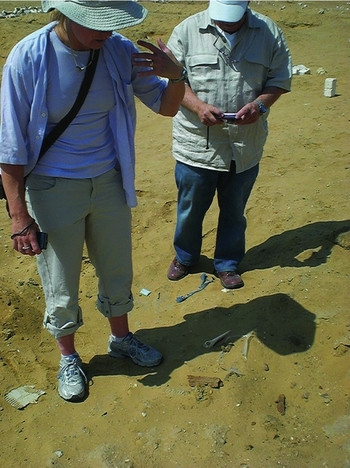 Ground Truthing Looting
Ground Truthing Looting
Image alt text: Ground verification showing fresh looting signs with coffin fragments and human bones.
9. What Legal Measures Exist to Deter Looting in Egypt?
Egypt’s legal system includes laws to deter looting, but enforcement challenges remain due to limited resources and jurisdictional issues.
Egypt has a number of legal measures in place to deter the looting of archaeological sites and the illegal trade in antiquities. These measures include laws that prohibit looting, theft, and damage to archaeological sites, as well as laws that regulate the export and import of antiquities.
The primary law governing the protection of cultural heritage in Egypt is Law No. 117 of 1983, as amended. This law prohibits the unauthorized excavation, removal, or damage of any archaeological site or artifact. It also establishes a system for the registration and protection of archaeological sites and artifacts, and provides for penalties for violations of the law.
In addition to Law No. 117, Egypt has a number of other laws that are relevant to the protection of cultural heritage. These include:
- The Antiquities Protection Law, which regulates the export and import of antiquities.
- The Penal Code, which includes provisions that criminalize theft, vandalism, and other offenses against cultural heritage.
- The Customs Law, which regulates the import and export of goods, including antiquities.
Egypt is also a party to a number of international conventions that are relevant to the protection of cultural heritage. These include:
- The UNESCO Convention on the Means of Prohibiting and Preventing the Illicit Import, Export and Transfer of Ownership of Cultural Property (1970).
- The UNIDROIT Convention on Stolen or Illegally Exported Cultural Objects (1995).
Despite these legal measures, the looting of archaeological sites and the illegal trade in antiquities remain a serious problem in Egypt. One of the main challenges is the lack of effective enforcement of the laws. The Ministry of Antiquities, which is responsible for protecting cultural heritage, is understaffed and underfunded, and it lacks the resources to effectively monitor and patrol all of the archaeological sites in Egypt.
Another challenge is the corruption within the government and law enforcement agencies. Some officials have been known to turn a blind eye to looting and the illegal trade in antiquities, or even to participate in these activities themselves.
The lack of public awareness about the importance of protecting cultural heritage is also a challenge. Many Egyptians are unaware of the laws that protect archaeological sites and artifacts, or they do not understand the importance of preserving cultural heritage for future generations.
To address these challenges, the Egyptian government needs to:
- Increase the resources available to



